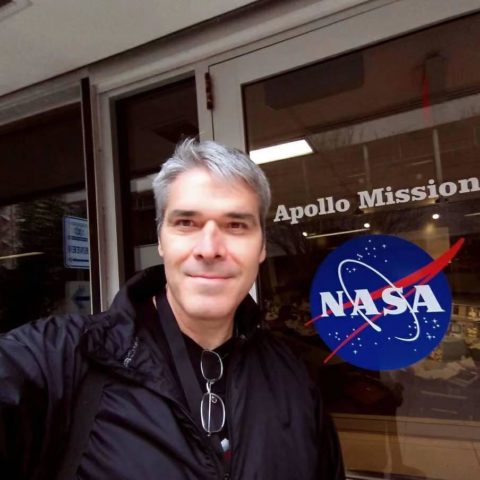Julian grew up in San Pedro, Montes de Oca. Both of his parents were professors at the University of Costa Rica. He completed middle school at the Pan-American School and from 9th to 11th grade he attended the Anglo-American School. Julian completed his bachelor’s degree in Electrical Engineering from the University of Costa Rica and eventually immigrated to Boston to get his M.Sc. and now a Ph.D.
Remember the science fiction idea of flying cars? ( eg Blade Runner). Julian is working to make this technology finally happen in the real world.
“Picture what the future of aerospace travel will look like 10/20 years from now (or maybe more). We will have flying vehicles, above and around cities, and those types of things. My branch is working on developing technologies that will help make this not only a reality, but also, a safe reality.”


How long have you been working for NASA?
I joined NASA Langley Research Center in June of 2020 although I did an internship from the NASA Internship, Fellowship and Scholarship (NIFS) program in 2018 at Langley as well.
What is your job and what is your favorite thing about it?
I focus on developing high-performance computing software for Global Navigation Satellite Systems (GNSS) quality simulations in urban environments. We use these simulations to predict locations of poor GPS reception as well as provide safe paths for flying vehicles (which is the focus for my PhD dissertation). Given how bad GPS reception is within urban canyons, we predict how the GPS signals will propagate through the environment, casting shadows off buildings, and creating areas with poor satellite visibility. This applies to the whole gamut of urban air mobility (UAM) applications as most UAM technologies are reliant on GNSS. I use the power of Graphics Processing Units (GPUs) as well as multi-core CPUs to allow us to process more information at a faster rate, allowing us to achieve real-time solutions.
I’ve always enjoyed working with computers and writing code, but one of my favorite things about my job is the flexibility I have on where I can focus my research. As long as the work I do falls within the project’s scope, I am allowed to target certain ideas. For example, the idea of using these simulations to predict safe paths came out of a meeting with my mentor. Even though that wasn’t the goal of our project, it became a natural next step in our research. Having this flexibility allows me to always find new problems to tackle which keeps the work interesting.
What advice would you give to young Costa Ricans who are interested in working in a career in NASA?
If there’s anything I can say or that I’ve learned from my own experience, is that you should never limit yourself from taking risks. I never pictured myself working at NASA and that meant I never had the courage to even apply to an internship or anything like that here. If it wasn’t for a mixture of good luck and encouragement from friends and family, I wouldn’t be here today. You should allow yourself to dream big and you shouldn’t close any doors that might allow you to achieve it. Something that is also very helpful is to surround yourself with people that are positive and motivated. Having people around you who are driven will help you achieve your own goals as well.

Bruce Callow Canadian space educator and co-author of the books To the Stars: Costa Rica in NASA, To the Stars: Guatemala in Space and The Intrepids.

